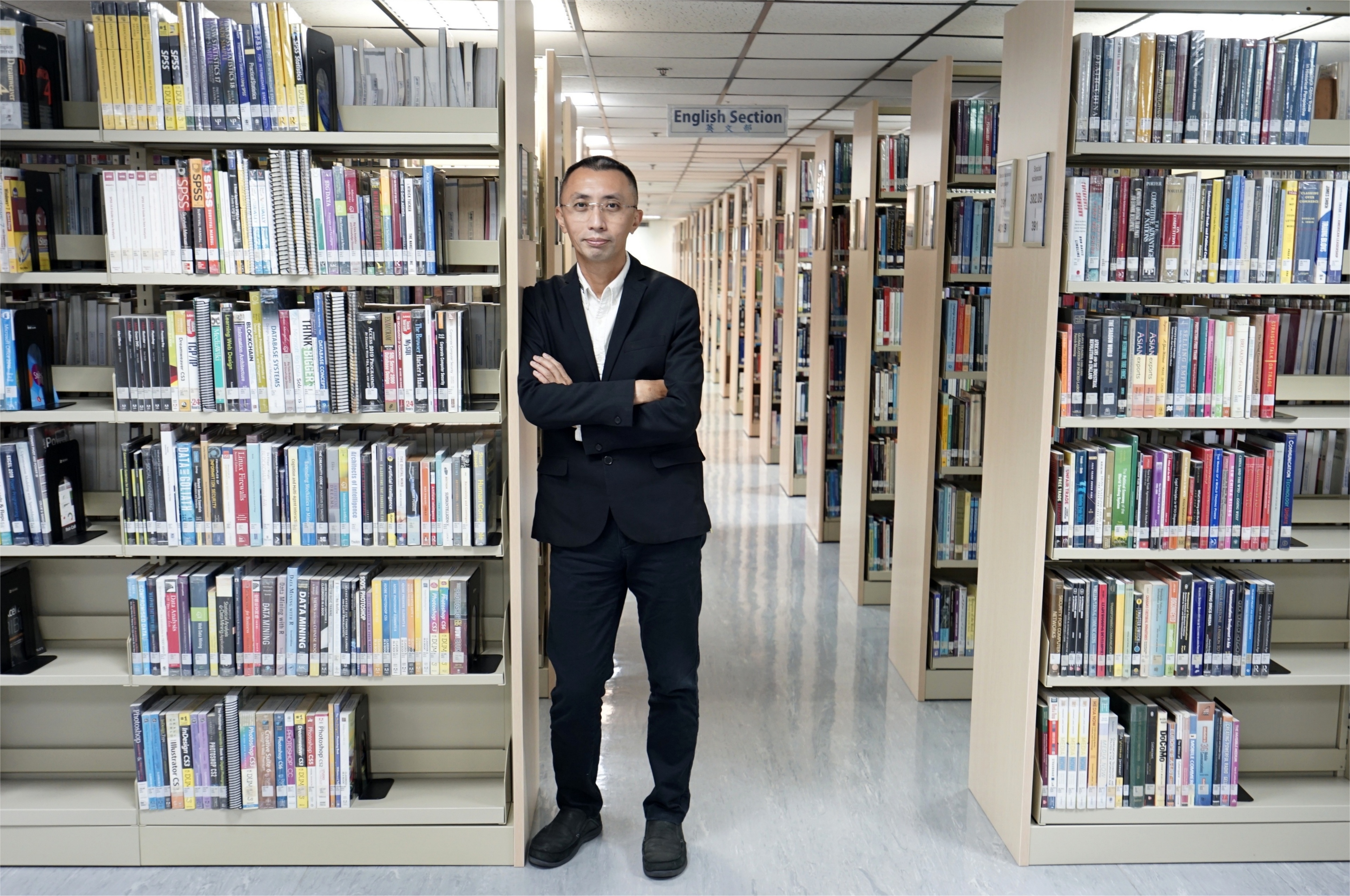Mr. Joe CHOW succeeded Mr. Desmond LEE as the Librarian at Shue Yan on 16th March, 2021. Mr. CHOW recently attended the interview with Shue Yan Newsletter and talked about various future development plans of the library, including the library renovation project, increasing user space and the library system migration.
Mr. CHOW worked in Shue Yan Library in 2006, and he also worked in the library of College of Professional and Continuing Education (CPCE), PolyU and Hang Seng Management College (now the Hang Seng University of Hong Kong). After completing the Master in Information Science, Mr. CHOW served as the head of the library systems (Systems Librarian) in Lingnan University and Singapore University of Technology and Design (SUTD).
Q: reporter | CHOW: Mr. CHOW Wai Ming, Joe
Q: What main tasks are given to you as the University Librarian by the senior management?
CHOW: The university management gave me two main tasks: (1) to improve the library system; (2) to cooperate with the Facilities Management Office to carry out the library renovation project. The existing library system in Shue Yan is used to manage the printed books, periodicals, and physical audio-visual materials. To face the continuous increase of e-books, e-journals and online audio-visual materials, upgrading the library system can make the management of e-resources more efficient, facilitate the information discovery, and expand the user’s interface, which is conducive to learning and research. The existing space allocation of the library, like other traditional libraries, is mainly used to store collections (books) and allow students’ individual study. Modern university libraries require more space for the students to conduct collaborative learning and group discussions. Therefore, one of the main purposes of the renovation is to redesign and expand the user space.
Q: Please explain more about the new library system.
CHOW: Firstly, let me talk about some background information. In 2014, five self-financing post-secondary institutions including Shue Yan University (Shue Yan University, Open University, Caritas Institute of Higher Education, Chu Hai College of Higher Education, and Tung Wah College) were awarded the government’s self-financing post-secondary education fund. The “Quality Enhancement Support Scheme” grants funds to jointly establish a “Collection Sharing and Information Discovery System”. The system provides a one-stop search function, allowing users to enjoy the electronic collections of five colleges and universities. The “back-end” of this system also has some advanced functions, allowing institutions to cooperate in the procurement of electronic resources, cataloging and discovery platform to improve efficiency. When this library system migrates, we will consider the development of this aspect of those functions. After comparing some library systems, we have a higher chance of adopting the system which is used by other tertiary institutions in Hong Kong. We expect that the new system will be launched next summer.
Q: Could you tell us more about the renovation and the plans to provide more space for users.
CHOW: The major direction is to release more space for users. The library is located from G/F to 6/F in the Library Complex. Circulation desk is located at the G/F. Book shelves and individual study areas are located from 2/F to 5/F. On the 6/F, there are discussion areas, discussion rooms, and storage. As the library staff offices are distributed among different floors now, they will be relocated in one single office in the future to free up more window space for students to use, and alleviate students from having to go up and down between library floors for different library services. We will also take this refurbishment opportunity to improve and upgrade the facilities, including air-conditioning and toilet facilities, based on the users’ opinions to the facilities in the past library surveys. We will start the renovation of each floor in phases.
Q: What are the new arrangements of other library services?
CHOW: For the acquisitions of library materials, we will continue to focus on e-books, e-journals and other e-resources. Under the COVID-19 pandemic, the decline in the borrowing rate of physical books has been even more pronounced. We will migrate the Remote Access System this summer, so that students can use the campus login name and password to access the library subscribed e-resources, and not need to remember another barcode and PIN. We will also upgrade the discovery platform to make it easier for mobile or tablet device users to discover the collections. In addition, we have recently relaxed the application age of the Staff Family Members Card from 18 to 12 years old. We will also enhance the publicity to alumni, hoping that more alumni will use the library’s services.
Q: How does the library support research?
CHOW: The library always provides the research and consulting services. In the future, we will enhance the support for postgraduate students, including conduct the interviews to understand their needs and prepare materials for their research topics. Based on the budget status, their required resources will also be purchased. In addition, I will promote Liaison Librarians service to enhance the communications between the academic departments and the library, to further understand the needs of each department, in order to speed up the processes in various aspects such as purchasing library materials.
Q: As the library has more electronic resources and moves towards more technology, what are the implications on the establishment and training of staff, and will you open the post of Systems Librarian?
CHOW: There are 22 full time staff positions in the library, and there are currently 19 staff. When recruiting new colleagues, I will consider recruiting people with a background in information technology and digital humanities. And the library now has full-time colleagues responsible for library systems management. For existing colleagues, I believe that with the transitional training, they can handle the work under the new library system.
Source: April 2021 Issue
